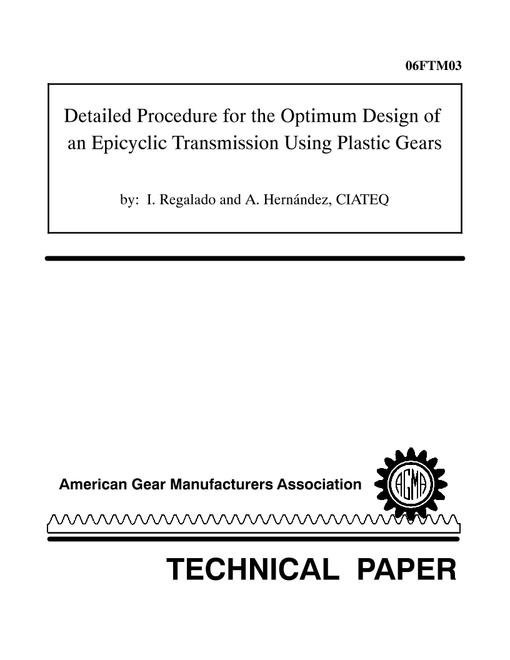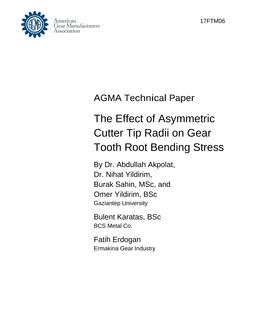-
-
Available Formats
- Availability
- Priced From ( in USD )
-
Available Formats
-
- Immediate download
- $85.00
- Add to Cart
-
- Printed Edition
- Ships in 1-2 business days
- $85.00
- Add to Cart
Customers Who Bought This Also Bought
-

AGMA 16FTM22
Priced From $85.00 -

AGMA 06FTM03
Priced From $47.00 -

AGMA 16FTM21
Priced From $85.00 -

AGMA 21FTM13
Priced From $85.00
About This Item
Full Description
Tooth root fillet is the maximum bending stress concentration region during a torque transmission via gear pairs. Increase in gear root fillet radius due to a larger cutter tip radius provides a smoother transition from involute to root via a larger trochoid and increases root critical section thickness and moment of inertia against bending of tooth. Therefore, gear tooth root fillet has an important effect on gear tooth root bending stress. Fillet radius at critical section of gear tooth root, on the other hand, is mainly affected by the tip radius of the cutting tool. It is generally defined in terms of normal module and is called as coefficient of cutter tip radius. In the present work, the effect of symmetric and asymmetric cutter tip radii on root stress is studied by keeping all other gear parameters constant. First, symmetric (the same) coefficient of cutter tip radii for both drive and coast sides (as given in literature) are used, then asymmetric (different) cutter tip radii coefficients for two sides (for both drive and coast sides) of gear tooth profile are used to benefit from larger radii of curvature for a reduced bending stress on drive or tensile side of the flank. With reference to condition generated by standard symmetric cutter tip radii, almost 10–11% reduction in bending stress is obtained by using asymmetric cutter tip radii coefficients for two sides of gear tooth profile with standard center distance and no tooth interference.





